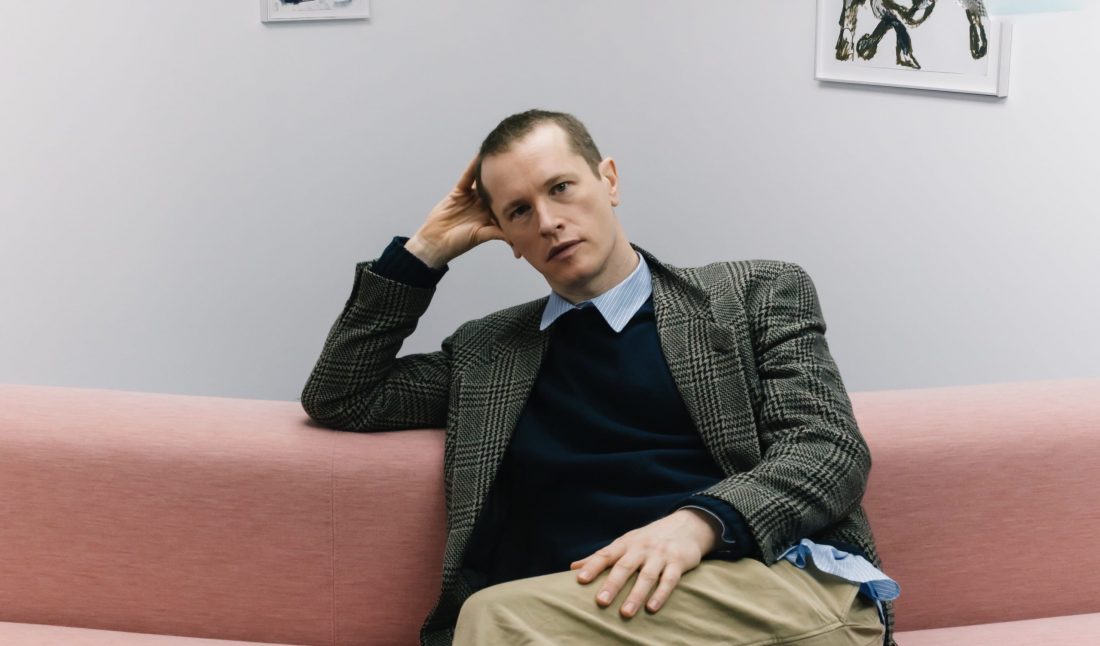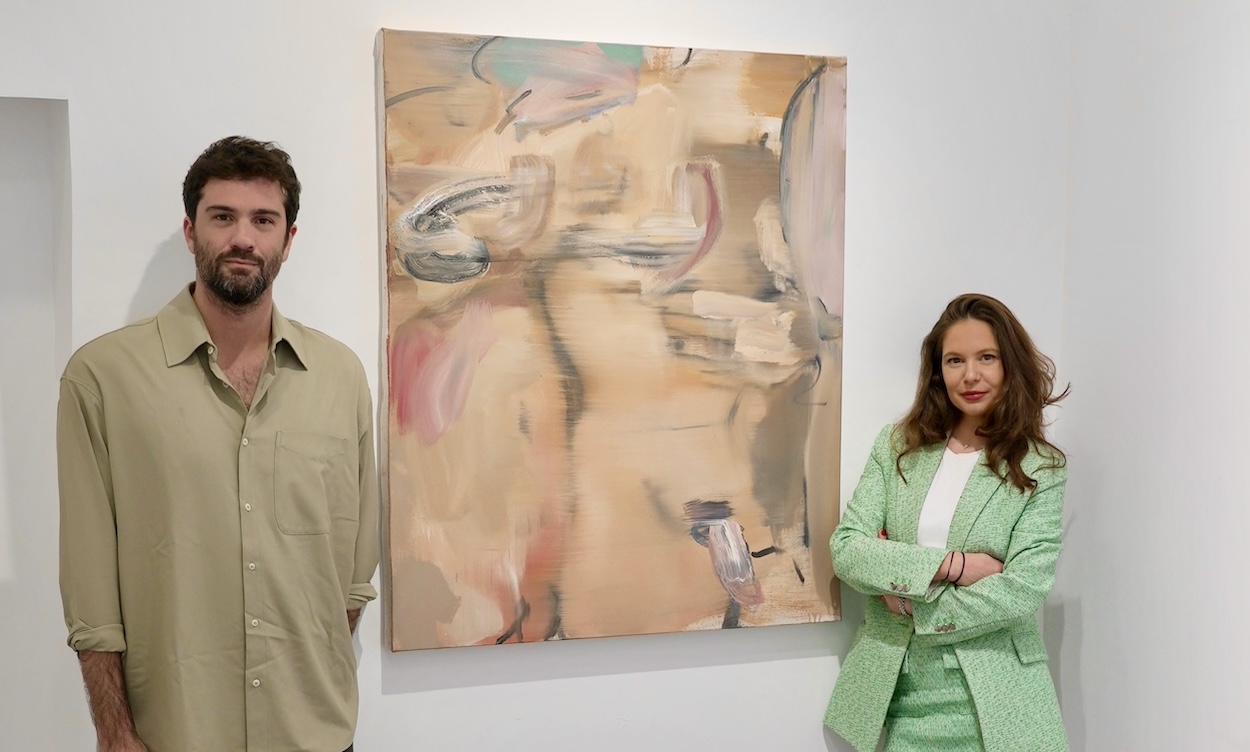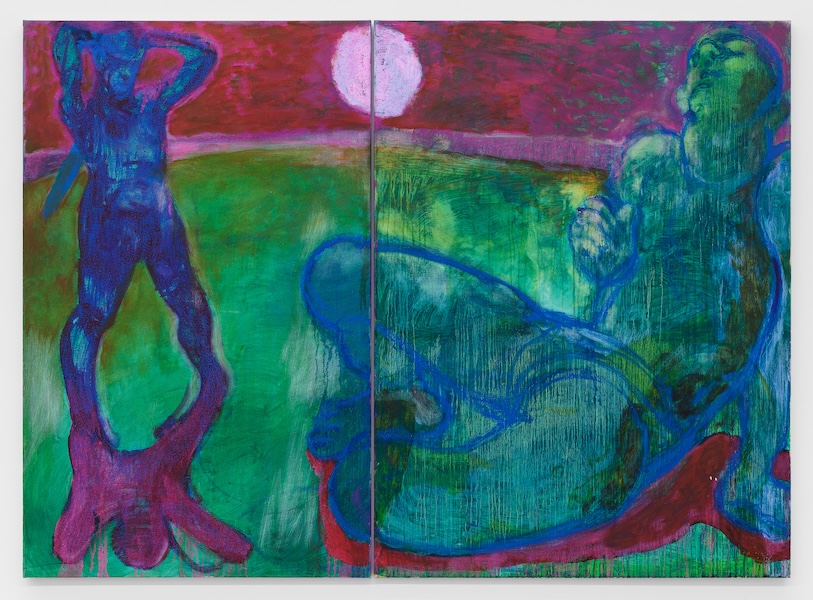Earlier this year in Paris, Galerie Derouillon’s rue de Turbigo space debuted the exhibition “Hex” by Alex Foxton. Closing last month, the English artist’s presentation dove into themes of traditions and inheritance. While the exploration stemmed from a personal standpoint, Foxton found his gaze broadened to look at humanity’s inherent—and sometimes curious—honoring of traditions along the way.
On one wall of the gallery were charcoal-hued works depicting personal items like eyeglasses, shoes, men’s clothing, and several iterations of the superstitious figure of the magpie (also the subject of other works, like the titular Hex). Alongside these compositions, the artist created extensive studies of Greek sculpture, resulting in a suite of detailed faces filling one canvas, with bodies painted separately in a two-dimensional manner, hung just beneath to complete the whole. Another area of interest for Foxton was the relationship between the bull and the matador, yet another thought-provoking example of tradition and inheritance.
Straying from his typical medium of choice, oil paint, Foxton presented a freer technique, alongside an embrace of new materials. Curious about the show as a whole and his approach to the works on view, Whitewall caught up with the artist to learn more.
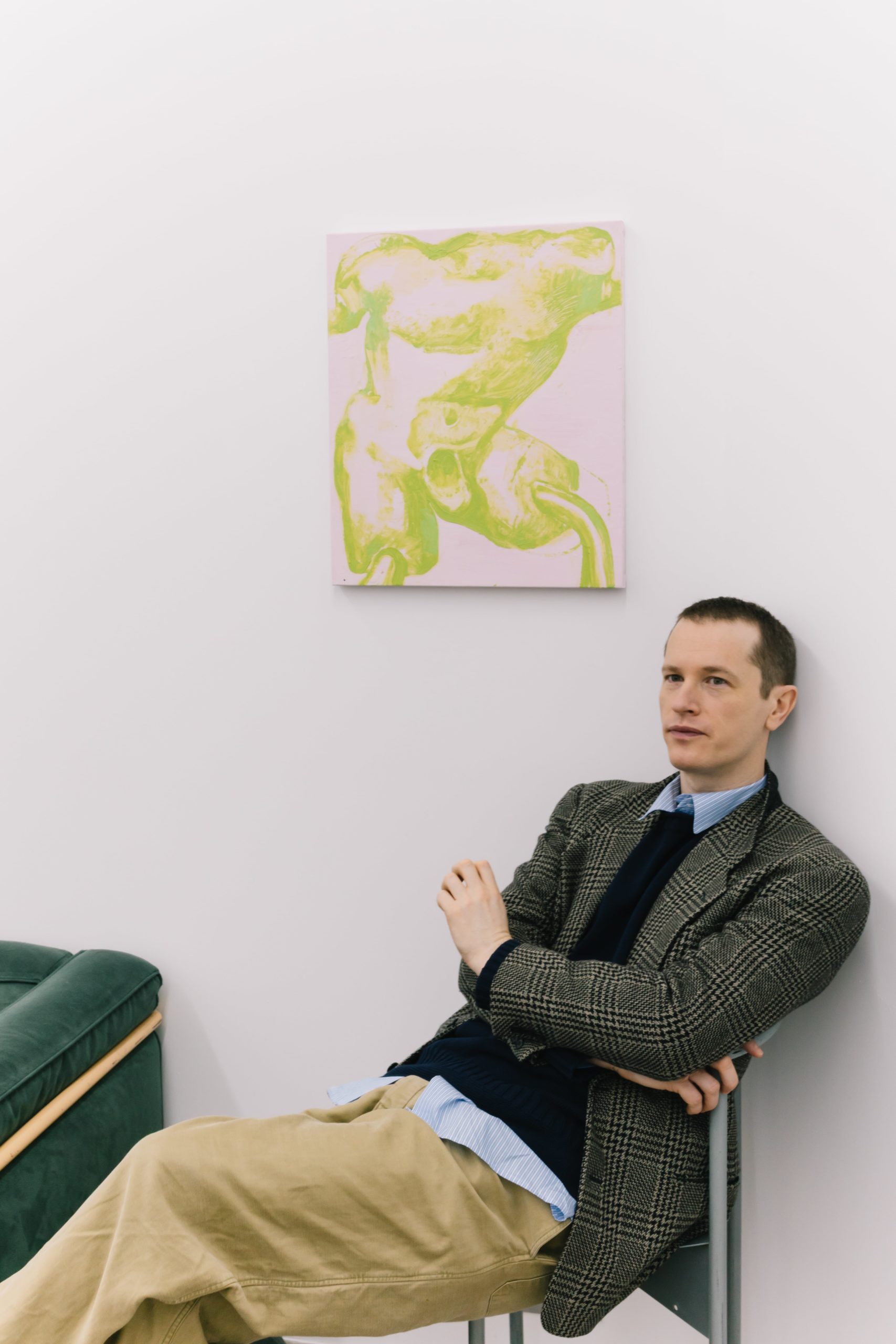 Portrait of Alex Foxton by Karl Hab.
Portrait of Alex Foxton by Karl Hab.
WHITEWALL: What was the starting point for “Hex”?
ALEX FOXTON: Usually I work from a figure or an archetype or a theme, and then I research into that. But this one I really wanted to have no structure; I wanted it to be completely free. People hadn’t really seen my drawings and for me it’s incredibly important, it’s my first love. I wanted to make the drawing much more part of the process and much more visible in the process.
One of the first things I drew in this series were the Greek statues, because I’d been to Greece for the first time. It’s such a cliché to draw from a Greek statue; it’s such a historical way of practicing your technique as an artist. But when I was looking around these museums in Greece, I thought, “this is so disturbing.”
It’s a museum full of destroyed bodies—bodies with their limbs missing, their heads missing, they’re cracked in two. They’re damaged; their faces are caved in; their legs are missing. I thought “this is so strange,” and I wanted to be able to communicate that kind of strangeness.
These classical things, which we grow up around, that are part of our heritage, but in the end, your job as an artist (or even as a viewer) is to take a step back and just look at these things and think, “What am I really seeing? What’s really there?” and not just, “What have I been told is there?”
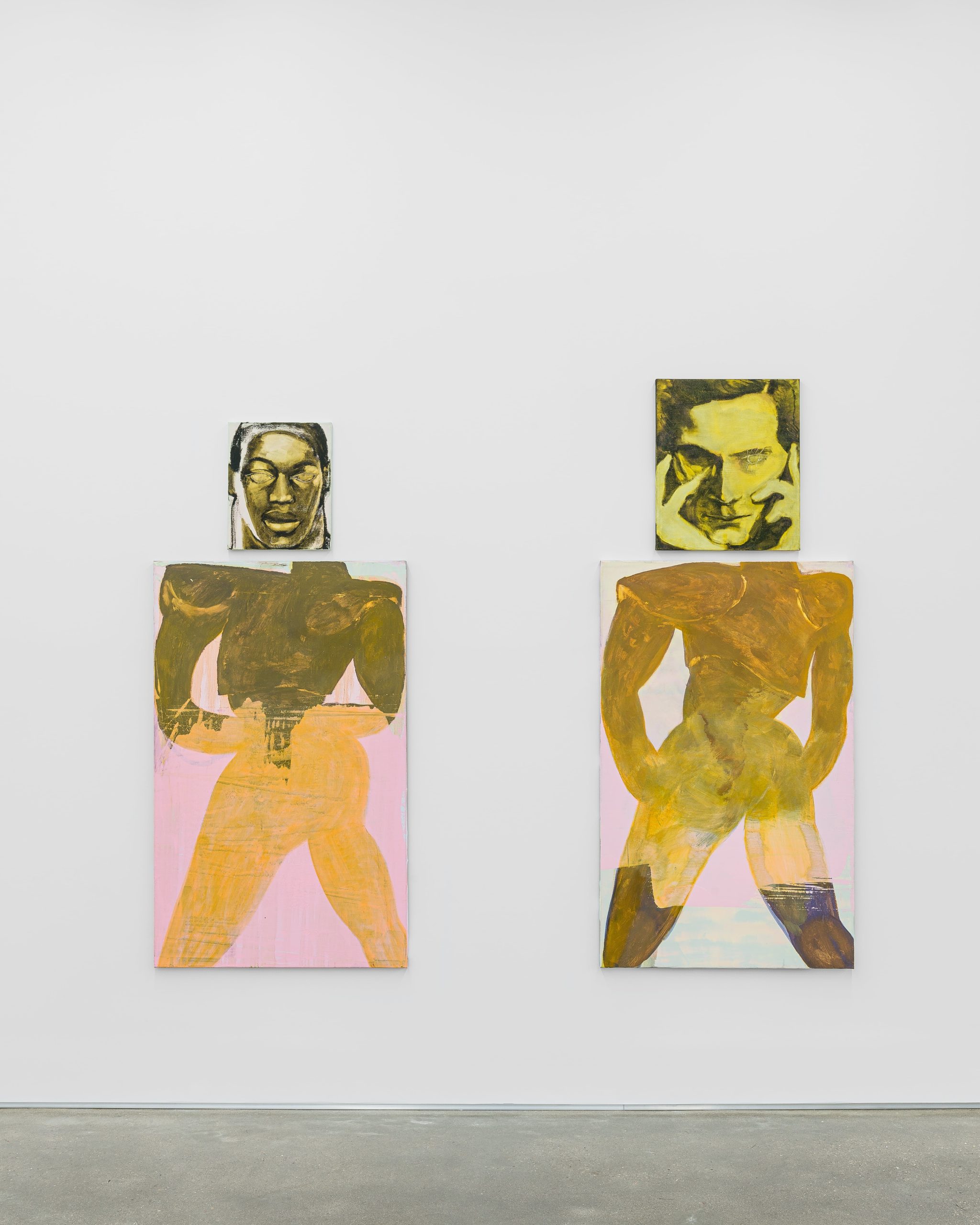 Installation view, Alex Foxton, “Hex,” photo by Gregory Copitet, courtesy of Galerie Derouillon Paris.
Installation view, Alex Foxton, “Hex,” photo by Gregory Copitet, courtesy of Galerie Derouillon Paris.
WW: Can you tell us about the choice to separate the face from the figure?
AF: It was an impulse to completely fill the frame, so that you would have zero background. I wanted it to be almost like the still lives that they fill the frame and there’s nothing behind, so it’s pure object. It was pure objectification.
There was also the idea of putting two very different techniques together. So the heads, which are done from photographs of famous or known people, I painted them with oil stick so they’re kind of drawn, but then they’re smudged and then modeled. They become very liquid and three-dimensional. And then the bodies are completely flat.
WW: You mentioned your fascination with the limbs and the brutality. Would you say this is how you came to the topic of the bull and the matador, also?
AF: Yeah, I think so. For me, bull fighting is completely fascinating because it’s so barbaric. It’s telling a truth about what humanity is; what it does to nature; and it’s something that we’re questioning. Again, it’s an inherited cultural tradition that is being questioned. But it’s also, for me, highly symbolic—the idea of a man who dresses up to go and kill an animal in a very ceremonious and ritualized way, is just full of connotations.
There’s just something that fascinates me about sort of ritualized violence and the idea that the bull could win. I think it says something to me about masculinity in general, or maybe life in general, that it is a fight and a struggle, and sometimes you do win [laughs].
WW: Can you tell us about the choices in material for the show—oil, acrylic, plaster, charcoal, and even coffee grounds?
AF: The whole exhibition for me was an experiment in loosening up, let’s say, and just not limiting myself. So in that way, I just used whatever I wanted to.
I was thinking about this, that you have these two impulses when you work. You have aan intellectual impulse of what you are hoping to achieve in general. And then you also have this physical/material impulse, which is what do I want to actually put in my hands and how do I want to create.
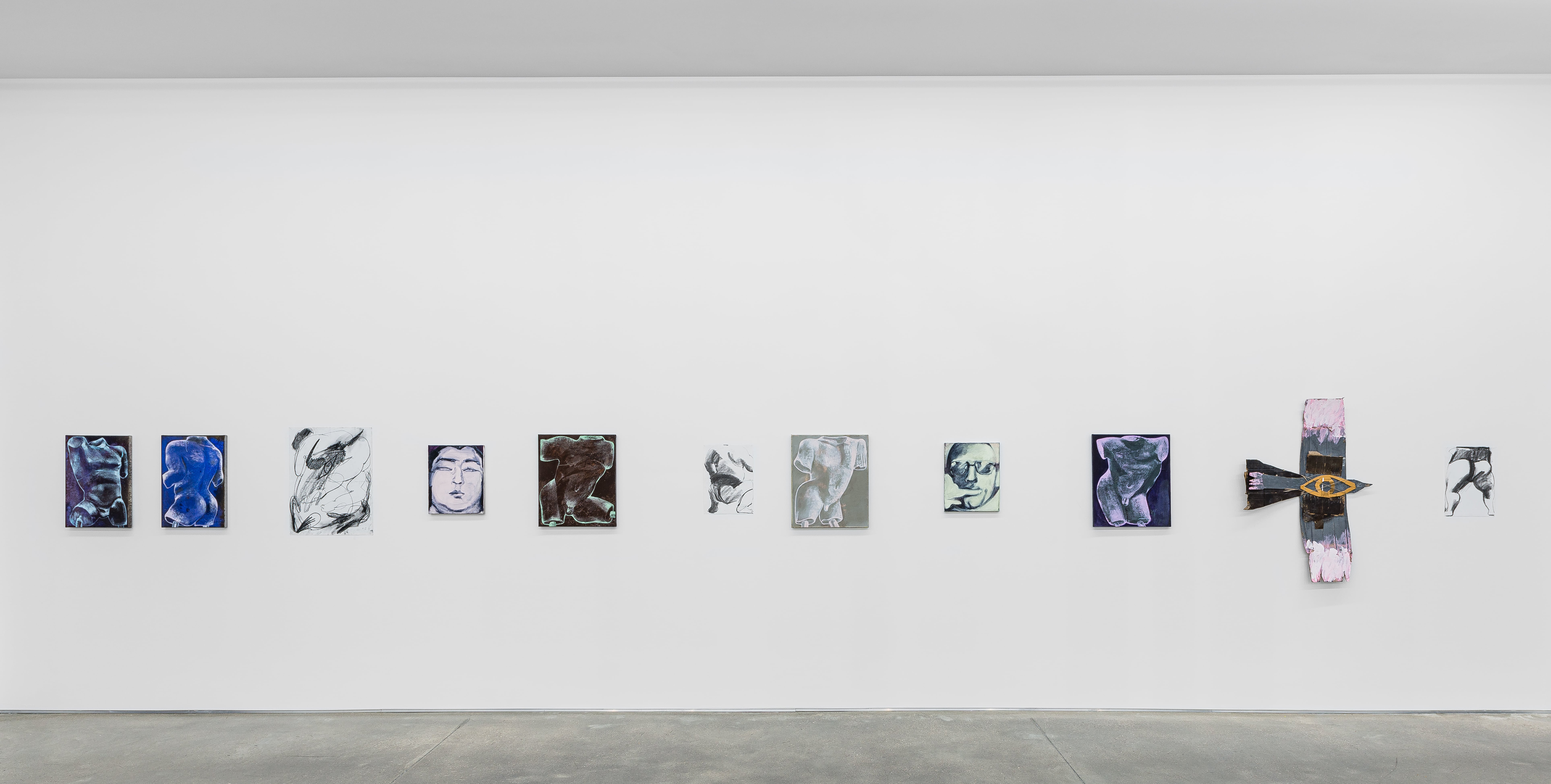 Installation view, Alex Foxton, “Hex,” photo by Gregory Copitet, courtesy of Galerie Derouillon Paris.
Installation view, Alex Foxton, “Hex,” photo by Gregory Copitet, courtesy of Galerie Derouillon Paris.
WW: On one wall of the show there are paintings and drawings of shoes, glasses, blazers, jackets, and magpies. Can you tell us about these works and how they relate to one another?
AF: You have this impulse, almost like a physical impulse. I wanted to draw something that was there; that was real. I worked a lot from photographs with the Greek torsos, for example, so I wanted just to draw something that was there; that was very personal, as well, because it’s my jacket.
Without really thinking about it, I made those first sketches and then my shoes. I was very pleased with the result because they seemed quite melancholy. Then I started to think [about] why these things are so important to me. Then I realized I was drawing the clothes that are closest to what my father wore when I was a kid—and still kind of wears. It’s like my inheritance from my father.
We have kind of reinvented clothing now and a man doesn’t have to dress like that anymore. So for me, when I wear them, I’m paying homage not just to my father but to this tradition.
Then, the magpies belong to a superstition that I grew up with and which is still very much part of my life, because I see magpies all the time. So, I’m reminded of this all the time. I’m reminded of the inheritance—the superstitions, the traditions, and the cultural inheritance.
WW: In “Hex” you address both the personal and the cultural. What relationships did you discover between the two?
AF: I discovered that they’re completely linked. These are things that seem to be outside you but that you internalize. Everybody has an inheritance. I’m looking at my personal inheritance, which I think is both specific, personal, and also general. I think people respond to that—especially men—idea of inheritance. You’re given archetypes as sort of templates.
I inherited from my father genetic traits. I’m also inheriting his expectations of what life is and his traditions, his superstitions, his cultural inheritance. And, through him (and also outside of him) I’m inheriting, as a white man from England, all of the things that are specific to that. And as a gay man, I inherit certain history from people like Pasolini and from [Yukio] Mishima and from [Michel] Foucault.
All of the things that we inherit from our culture, from our parents, they’re things that can be very heavy and very oppressive, but they’re also not to be disrespected. I think that’s what the magpie represents to me—this kind of eye on you all the time. Painting and drawing for me, as well, is a way of escaping from those things and a way of paying homage to those things.
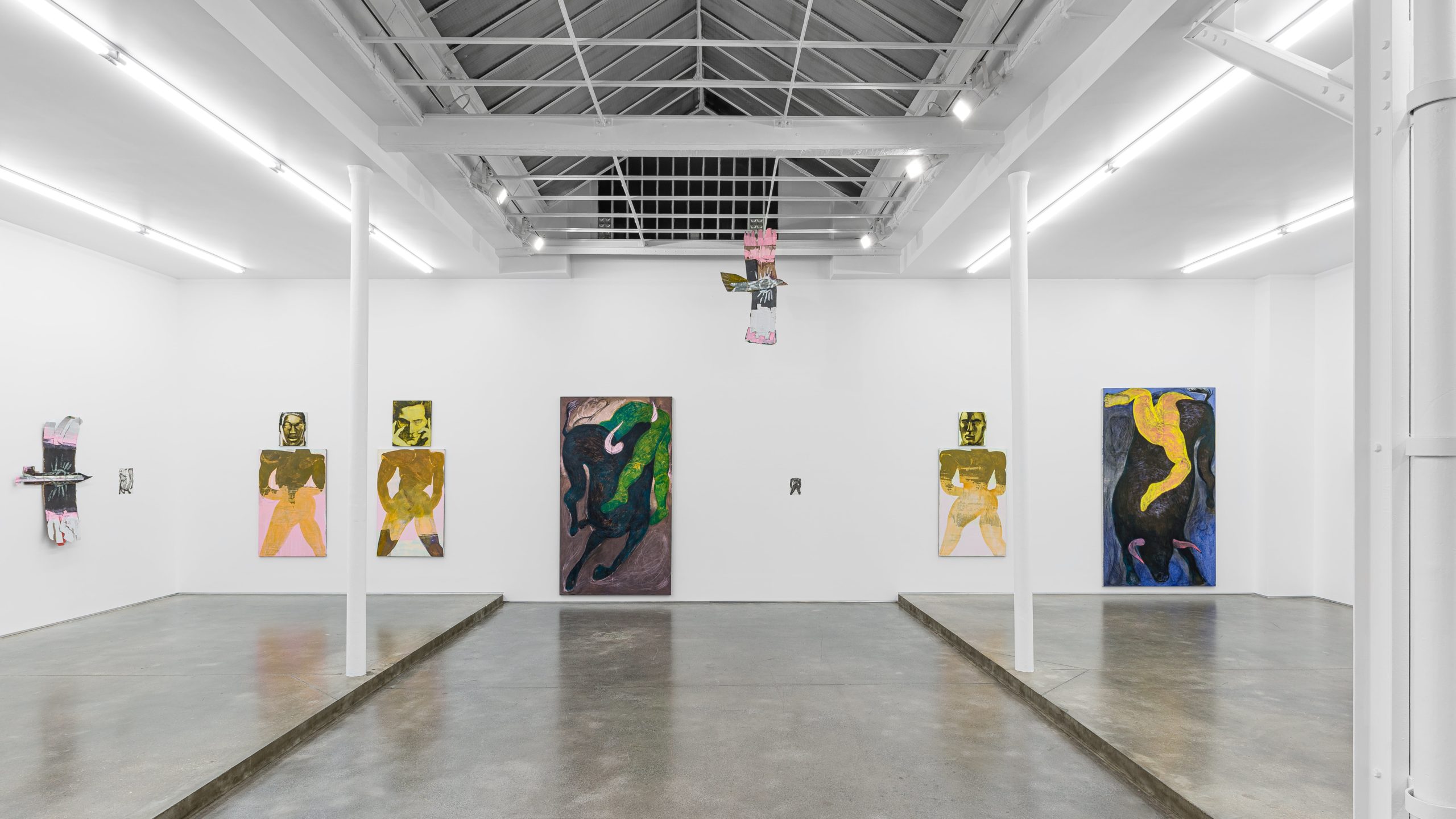 Installation view, Alex Foxton, “Hex,” photo by Gregory Copitet, courtesy of Galerie Derouillon Paris.
Installation view, Alex Foxton, “Hex,” photo by Gregory Copitet, courtesy of Galerie Derouillon Paris.
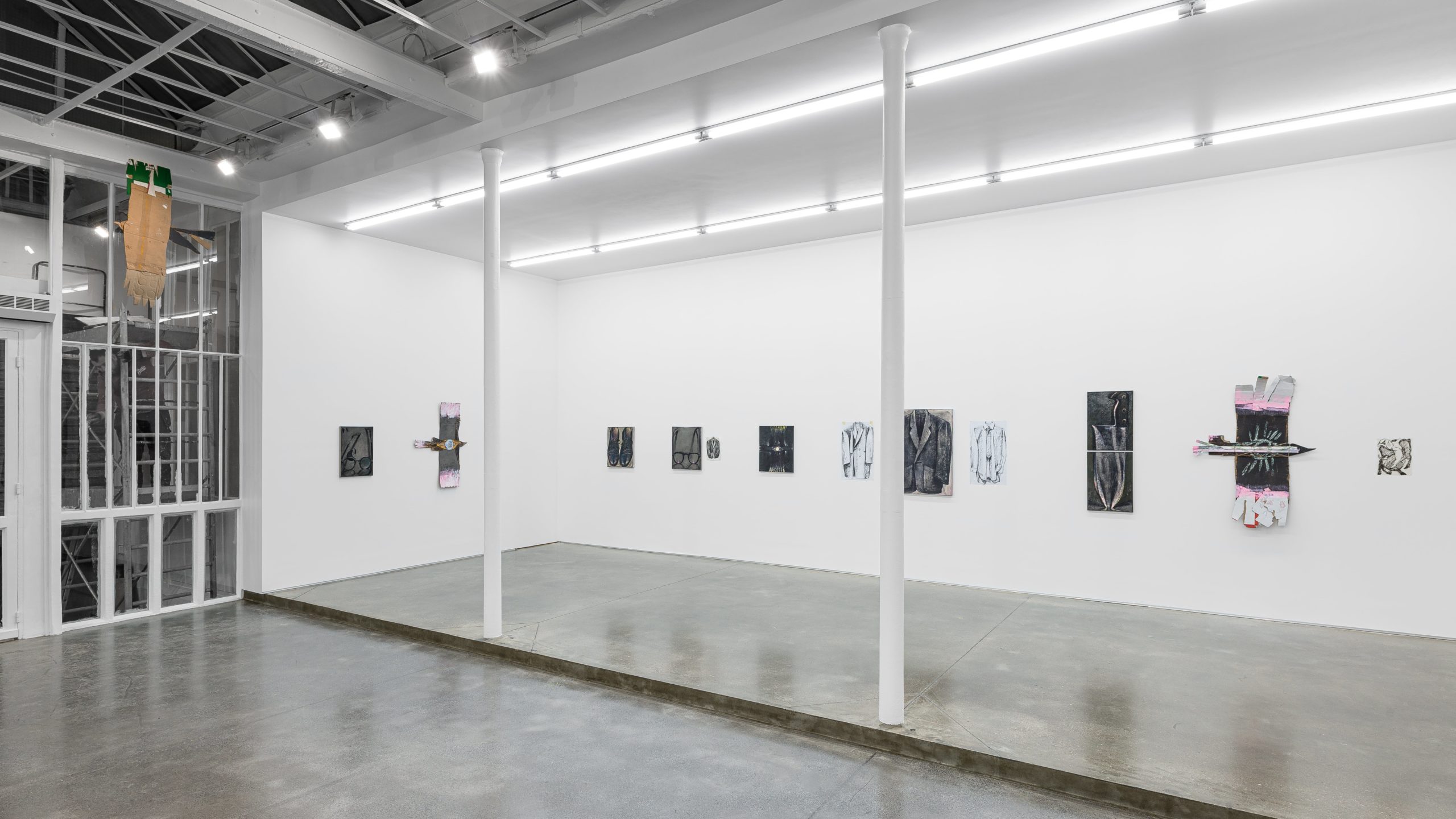 Installation view, Alex Foxton, “Hex,” photo by Gregory Copitet, courtesy of Galerie Derouillon Paris.
Installation view, Alex Foxton, “Hex,” photo by Gregory Copitet, courtesy of Galerie Derouillon Paris.
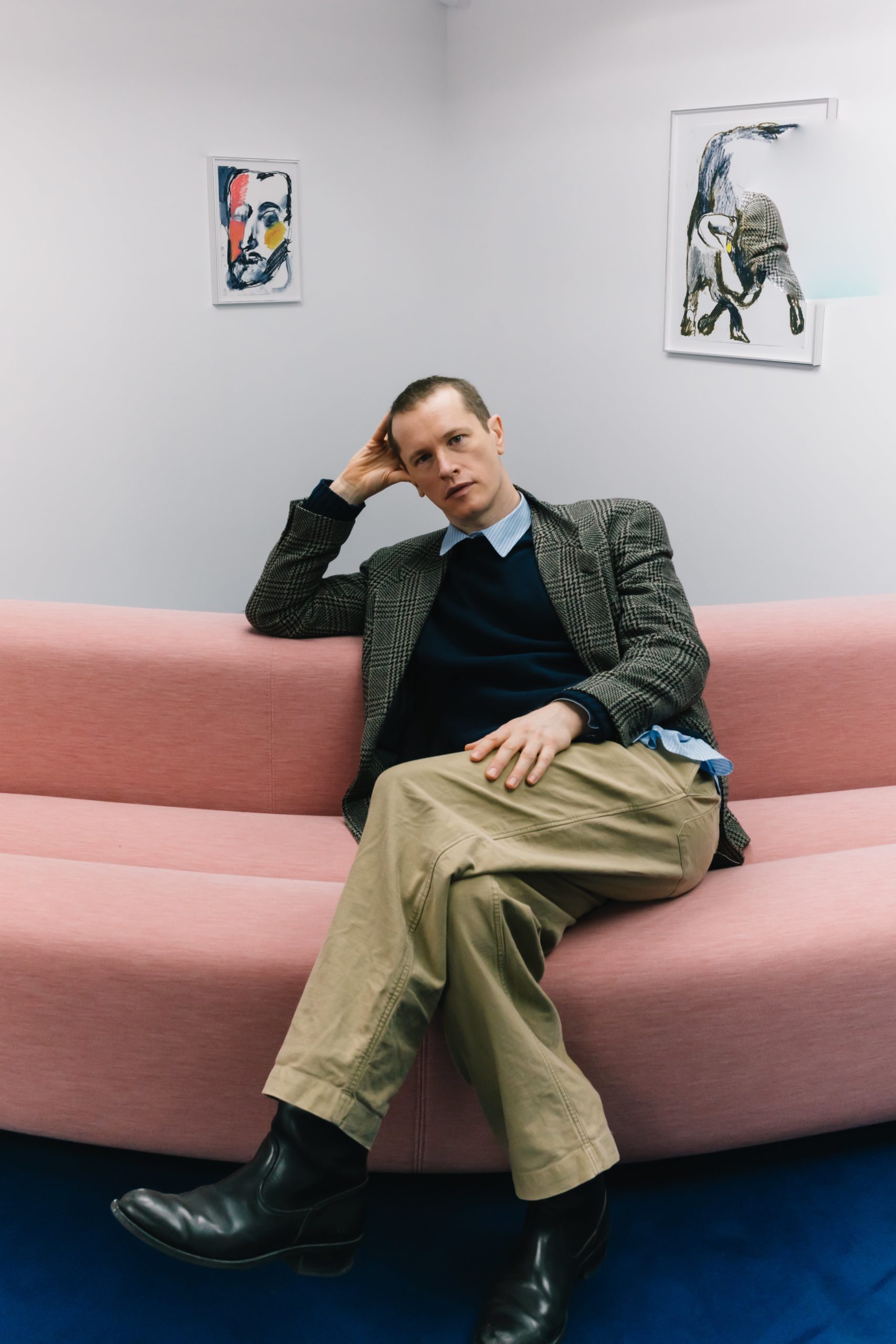 Portrait of Alex Foxton by Karl Hab.
Portrait of Alex Foxton by Karl Hab.






